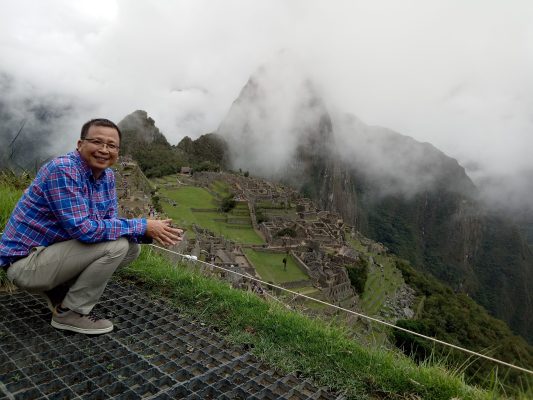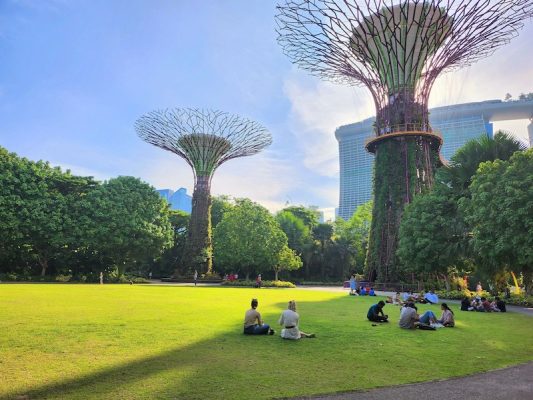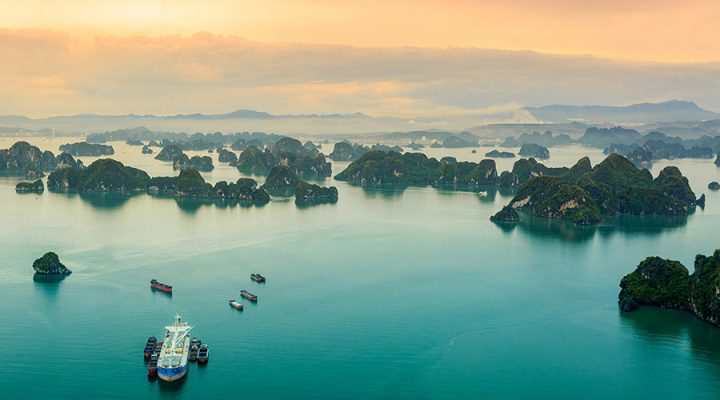THE MEKONG RIVER
Written by Michael Buckley
In 1866, the mighty Mekong river was still mostly a mystery. Its source and upstream geography were complete unknowns. Europeans were eyeing the area, however, they believed the Mekong could be used as a trade route from landlocked Yunnan, southwest China to coastal Vietnam. And it would be the perfect conduit for Cochinchina, France’s new colony in southern Vietnam, to extend its influence in the region.
At the time, Yunnan and China were seen as an oriental El Dorado. One keen observer, naval Lieutenant Francis Garnier, had written that Frenchmen “should take the measure of the unknown riches enfolded in the valleys and mountains that enclose these rivers”. He enthused about rumours of “mines of amber, serpentine, zinc, gold and silver that lie along the upper course of the Mekong”. Not to mention tea, silk and other exotica.
So Garnier and five companions set out in 1866 on an expidition into unexplored Indochina in an attempt to solve the riddles of the mighty river. Because, as Garnier wrote in a letter to a friend: “the unknowns was irresistible”.
Embarking on what to be an epic two year voyage through Vietnam, Cambodia, Thailand, Laos, Burma and China, they knew only that ahead lay thousands of kilometers of uncharted terrain. Their exploration had all the elements of a spy mission – reconnoitring and mapping territory that might be claimed by France, and establishing political links in the region – all under the cover of a semi scientific expedition, collecting samples of fauna and flora.
There also was some urgency to the French quest: it was feared that the British might find a trade route through to Yunnan from Burma, or advance along the Yangtze from Shanghai and beat the French to the region’s bounty.
The group set off in high spirits- but without passports with which to enter China- from Saigon on June 5, 1866. Apart from the six principal explorers led by Commander Ernest Doudart de Lagree, there saw a back up retinue of three translators and 13 militiamen. They left in two small steam powered gunboats, loaded with 500 kilograms of rations, 700 liters of wine and 300 liters of brandy. For expenses along the way, they took gold bars, Mexican dollars and Thai coins, but in a move that signalled the farcial, forgot several cases of scientific instruments.
PASSAGE IMPOSSIBLE
First stop was Phnom Penh, the royal capital of Cambodia, which had recently fallen under the French “protection”. From Phnom Penh, the group detoured via Lake Tonle Sap to Angkor Wat, then back up the Mekong. At Kratie, they had to abandon their gunboats and transfer to small crafts, large pole- driven canoes. That’ s when the problem began: health, the elements, the river (in the form of rapids) all took their toll. The group poled laboriously upstream past the Sambor rapids to the Lao- Cambodia border where the sandbars slowed them more. Then they hit the Khong Phapheng Falls, where the Mekong river spreads to 14 kms wide with a maze of channels, cascades and waterfalls up to nearly 20 meter high. Their dreams were dashed: it would be impossible for commercial vessels to get past this obstacle. After poling along the Mekong’s edge and laboriously hauling their canoes along the banks, the expidition eventually reached Laotian territory at Bassac.
At this point, another serious yet increasingly farcial problem loomed: permission was still not forthcoming to cross the Chinese frontier. Garnier took a small party to Stung Streng (on the Cambodian border) to see if couriers had delivered the passports. They had not, so he embarked on the bizarre mission of striking overland back to Phnom Penh to collect them, a 750 km journey each way. It was an extraordinary two month detour over terrain where no Westerners had ventured, running the gautlet of Khmer bandits on the way.
Garnier had decided to use relays of local porters for minimum speed, but at the time most Khmer men were busy with the harvest, leaving only young women to carry baggage. Garnier was in a hurry, but the female porters were not. As he relates, they stripped naked and plunged in at almost every stream, while he stood, outraged and frustrated, on the banks. Finally, he got the precious passports and returned to the expidition: he had covered some 1,500 kms of extremely tough terrain in a mere two months.
Meanwhile, Lagree’s entourage had grown. He had taken on some heavy movers- a caravan of 15 elephants to ease the travel. This was in addition to 15 ox carts and a train of over 100 porters. The overweight expidition finally reached Vientaine in April 1867, almost a year after setting out. At this point they had accepted the Mekong was not a viable French trade route, but fired by his desire to find the source, Garnier was still keen to forge on. Two weeks later they were in Luang Prabang, the royal capital of Laos.
END TO EL DORADO
Luang Prabang must have seemed like paradise. The group found themselves the subject of intense interest for the local women. When asked why she was not worried about being with the explorers without a chaperone, one explained that with their long beards, they must be at least 80 years old- long past the age when it was unsafe to be alone with them.
Luang Prabang provided much needed rest and soon after, leaving Laos, they finally crossed the Chinese frontier near Simao. But southweast China was not exactly the El Dorado they had been hoping for. It was more like hell. They had to deal with voracious leeches and bouts of fever and delidirum, and to cross passes up to 2,000 meters through winter ice and snow. As the first white men to visit, they were the object of intense interest from curious locals. In Chienchui, Garnier was confronted by a stone throwing mob and had to draw his revolver and fire shots to make his attackers back off.
The expedition continued overland to Kunming- the first major town since leaving Saigon- and north of that to Huize. Here Lagree fell sick, so Garnie, in another overland sidetrip, led a party westward to Lake Taly. No Westerner had ever ventured into this kingdom. They did not stay long- in his “welcome” message, the Sultan of Taly threatened to kill them. When Garnier returned to Huize, there was very bad news. On March 12, 1868, Lagree had collapsed and died from a combination of dysentary, fatigue and possibly malarial fever. His death marked an end to the expidition: the explorers packed it all in and headed home down the Yangzi River to Shanghai. They eventually reached Saigon on June 29, 1868.
MARVELLOUS DISCOVERIES
Of the 9,960 kilometers covered on the expedition, over 5,000 represented uncharted territory: the explorers had discovered abandoned Khmer ruins, forged through virgin jungle, and collected new species of orchids and medicinal plants. And they had charted the Mekong for its full course through what is today Vietnam, Cambodia,Laos,Thailand and Myanmar.
The Mekong expedition must rank as one of the greatest journeys of the19th century: in its own haphazard and messy fashion, it penetrated and mapped an area until then completely blank on most maps.
The French eventually realized their dream trade route to China- in the form of a narrow gauge railway, constructed in 1902-1910 from Hai Phong on the Vietnamese coast up through Hanoi to Kunming in Yunnan. The project was a financial failure but the line still runs today- the only narrow gauge railway line within China.
Lieutenant Francis Garnier’s dream trip- the journey to the source of the Mekong- had to wait another 130 years to be realised. In 1995, another French explorer, Michel Peissel, laid claim to the discovery of the Mekong’s source- on the fringes of Tibet, at 4,975 meter head of Rupsa Pass. This was eclipsed by a Chinese Japanese team that found another source of the Mekong, located further away from the sea.
But Garnier, with his fascination for the unknown, had solved most of the Mekong’s mysteries well over the century before, despite what now seem almost insurmountable odds.













